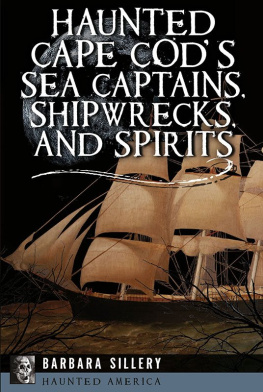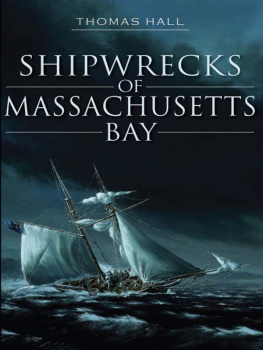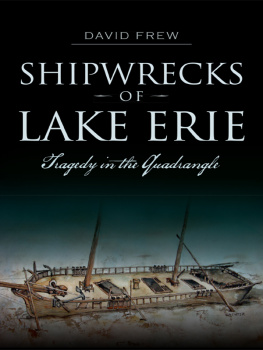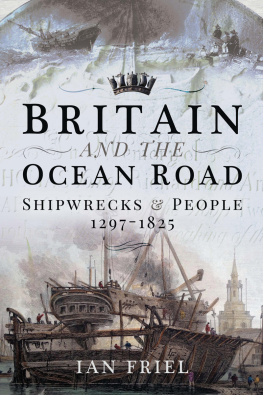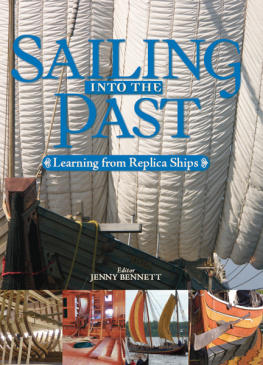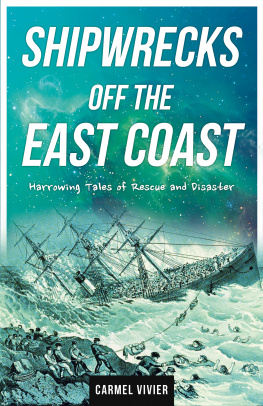
Published by The History Press
Charleston, SC 29403
www.historypress.net
Copyright 2015 by Captain Robert F. Bennett, Susan Leigh Bennett and Commander
Timothy R. Dring
All rights reserved
First published 2015
e-book edition 2015
ISBN 978.1.62585.531.2
Library of Congress Control Number: 2015931111
print edition ISBN 978.1.62619.977.4
Notice : The information in this book is true and complete to the best of our knowledge. It is offered without guarantee on the part of the author or The History Press. The author and The History Press disclaim all liability in connection with the use of this book.
All rights reserved. No part of this book may be reproduced or transmitted in any form whatsoever without prior written permission from the publisher except in the case of brief quotations embodied in critical articles and reviews.
This book is dedicated in part to the memory of the 530 souls lost on the ships Powhattan and New Era. It is also dedicated to the memory of the heroes of the United States Life-Saving Service, the original New Jersey surfmen and their descendants and the modern heroes of the United States Coast Guard.
The authors also express their appreciation to Captain Bennetts family: his wife, Barbara, and daughters Lorri and Susan. In keeping with the tradition of dedications, this book is also dedicated to Barbara Ann Bennett, the lead authors wife, with the same inscription he wrote on January 18, 1977, for his first book:
I cannot express to you all the boundless appreciation that is in my heart for your encouragement, and forbearance, and confidence in the preparation of this book. All I can say isI love you, til forever.
Finally, this book is dedicated to the lead author himself, Captain Robert Frank Bennett, USCG-Retired, who left this world on September 7, 2011.
For you, Daddy
Love, Susan Bennett
CONTENTS
FOREWORD
In 1848, Congress passed legislation requiring the government of the United States to establish a rescue response system to deal with the increasing number of fatal shipwrecks occurring near New York Harbor. This was not the first expression of federal concern about marine safety; one of the first federal statutes, passed in 1789, provided for the establishment and maintenance of lighthouses and other navigational aids and continued the system of marine pilotage that had been in existence at colonial ports. An increasing number of steamboat boiler explosions resulted in an 1838 law that sought to prevent such disasters. The United States Coast Survey was created to survey North Americas coastal waters and to publish up-to-date nautical charts so that ships might safely navigate along its seaboard. United States Revenue Marine cutters were directed to cruise the areas of the coast where accidents frequently occurred so they could render assistance when needed. Finally, starting in 1849, the United States government established unmanned coastal rescue stations to respond to shipwrecks. These stations and the rescue equipment in them were intended to be utilized by volunteer rescuers, similar to a volunteer fire department. This system, however, had several shortcomings, which were tragically demonstrated in 1854.
That year, two horrendous shipwrecks took place on the New Jersey coast. Both involved American-registered sailing packet shipsthe New Era and the Powhattan that were carrying European immigrants to America. Both ships ran aground on offshore sandbars, coming to rest within one hundred to three hundred yards of the beach. The coastal area where this happened was between Sandy Hook and Little Egg Inlet, which was the same stretch of beach that the federal government had selected in 1848 to build the new rescue stations. In the first few years of operation, starting in 1849 (when the first of eight initial stations was completed), the stations received plaudits for several spectacular rescues, the most famous of which occurred after the Ayrshire shipwreck of 1850. Volunteers using the federal rescue equipment saved all the ships crew and 201 out of 202 British immigrant passengers. The 1854 New Era and Powhattan disasters and associated loss of life, however, resulted in a sobering realization that a proper rescue system required much more than simply placing equipment at eight locations along a sixty-mile coastline and trusting locally available volunteers with the responsibility for its maintenance and proper use, no matter how good the intentions of the volunteers might be.
The first of the two shipwrecks, the Powhattan , happened on April 16, 1854, on Long Beach Island near the present-day community of Surf City, New Jersey. All of those aboard (at least 326 persons) perished. The second shipwreck, that of the New Era , happened on November 13, 1854, near the north end of what is now Asbury Park, New Jersey. While nearly all of the ships crew and some of the ships passengers survived, the majority of the immigrant passengers (206 total) perished, even though this shipwreck occurred directly in front of a rescue boathouse on the beach. Aside from the ships American crewmembers, the dead were mostly German passengers traveling to America in the hope of starting new lives for themselves. The immigrants dreams of a new life in America ended fatally within yards of the sandy beaches of New Jersey.
Overall, at least 530 persons died in these two shipwrecks. To illustrate the magnitude of the human loss, if the present-day practice of erecting roadside memorials to honor the deaths of motorists were applied to honor the victims of just the New Era and Powhattan disasters, there would have been one memorial erected every two hundred yards along the sixty miles of beach between Sandy Hook and Little Egg Inlet.
In both the Powhattan and New Era shipwrecks, sinister clouds of suspicion arose regarding allegations of body looting and cowardice. Explicit in the sad results of these two cases, the vulnerabilities of the federal life-saving system had been revealed. Another aspect of these tragedies was the potential for prevention through better measures and requirements in maritime safety. Although Congress and the federal government believed that steamboat fires and explosions that killed American citizens on our inland waters could be prevented by the development and establishment of technical construction rules and by the licensure of ship personnel, sailing ships carrying European immigrants to our coasts were overlooked in these efforts and therefore at risk.
The federally established coastal rescue system of stations and equipment (which was later expanded to include the coastline of Long Island and sections of New Jersey coastline farther south of the original eight stations, down to Cape May, New Jersey) of the 1840s and early 50s, while certainly important additions to coastline areas that previously had virtually no facilities for shipwreck rescue, did have serious shortcomings that resulted in a less-than-adequate system. None of these stations (actually boathouses) was manned by dedicated, trained, professional rescuers, and none was under the leadership and management of a full-time officer-in-charge, or keeper. The stations were located too far apart from one another to facilitate mutual support or a multi-station response. There was no program of maintenance of either the buildings or equipment, no system of inspections to verify station readiness and material condition and no regular appropriation of funds to pay for repairs or the replacement of worn-out or damaged equipment.


